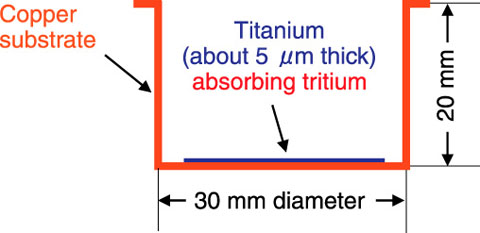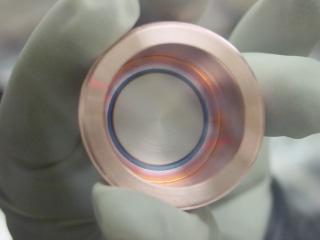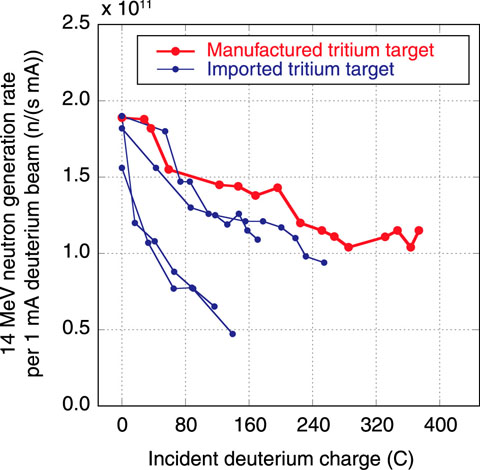
Fig.3-24 Cross section of a small tritium target

Fig.3-25 Tritium target manufactured in this study

Fig.3-26 Change in neutron generation rate with incident deuterium charge
In fusion power plants, electricity is produced thermally (nuclear heating) by generating intense neutrons through nuclear fusion reactions involving deuterium-tritium (DT) plasmas. The plants also produce the fusion reactor fuel tritium through reaction between neutrons and lithium (tritium production). For safety reasons, neutrons have to be shielded so that they do not leak outside the fusion power plants (shielding). Exposure of workers to radiation from radioactive materials (activation) in equipment resulting from neutron irradiation should be reduced to the minimum possible level. One of the most important issues in fusion plant development is to demonstrate how accurately we can predict nuclear heating, tritium production, shielding, and activation for a specific design.
We produce 14 MeV neutrons by accelerating deuterium up to 350 keV with an electrostatic field and then focusing the accelerated deuterium onto a tritium target at the Fusion Neutronics Source (FNS) facility of the JAEA. We use the neutrons to carry out a study for the above issues. At a tritium target with a diameter of 30 mm (Fig.3-24), tritium is absorbed by the titanium layer evaporated on a copper substrate. A French company currently dominates the tritium target market because a mass-tritium handling facility and tritium absorption techniques are required to manufacture tritium targets. A stable and timely supply of tritium targets to the FNS is required.
In a preliminary evaluation, it was found that a titanium layer covered with impurities does not absorb tritium. In the manufacture of tritium targets, the removal of impurities from the titanium layer is important. By repeatedly conducting cold tests with deuterium, we found that the main impurity was water. We therefore developed a vacuum chamber equipped with a heater for tritium absorption. We succeeded in manufacturing eight small tritium targets with tritium amounts (about 400 GBq, 1 mg) similar to those in imported ones (Fig.3-25). At the FNS, the decrease in the generation rate of 14 MeV neutrons with an increase in the deuterium charge incident on a tritium target was examined. It was observed that the decrease in the case of the tritium targets manufactured in this study was smaller than those in the case of the imported targets (Fig.3-26).